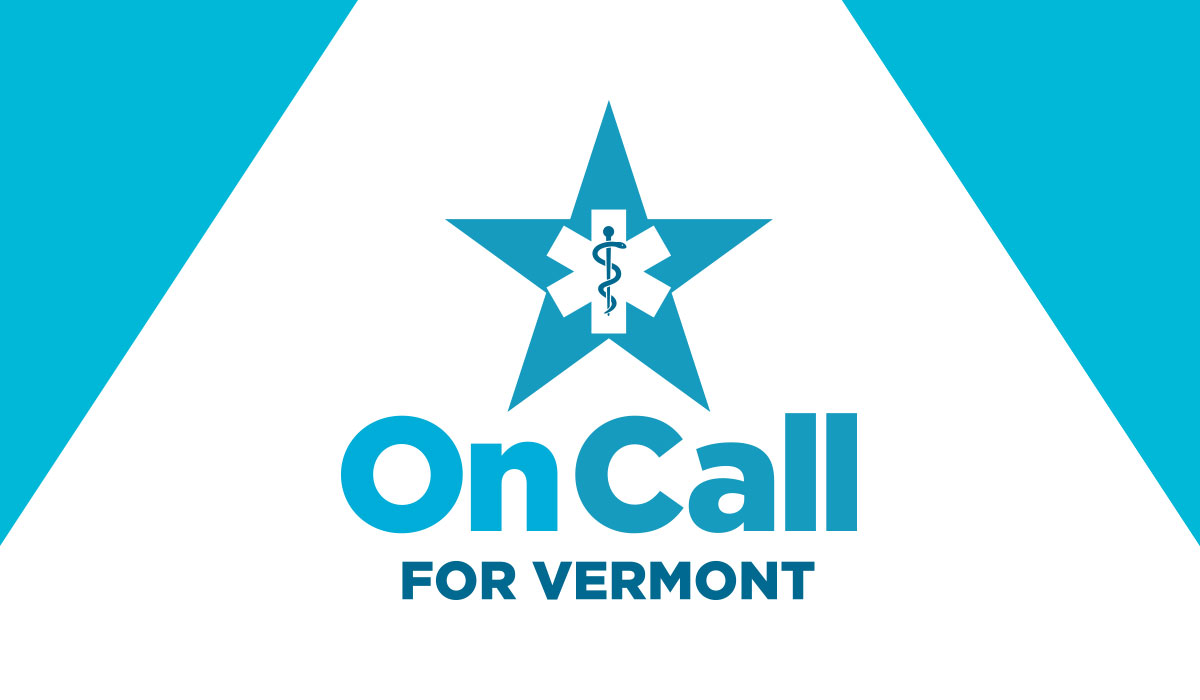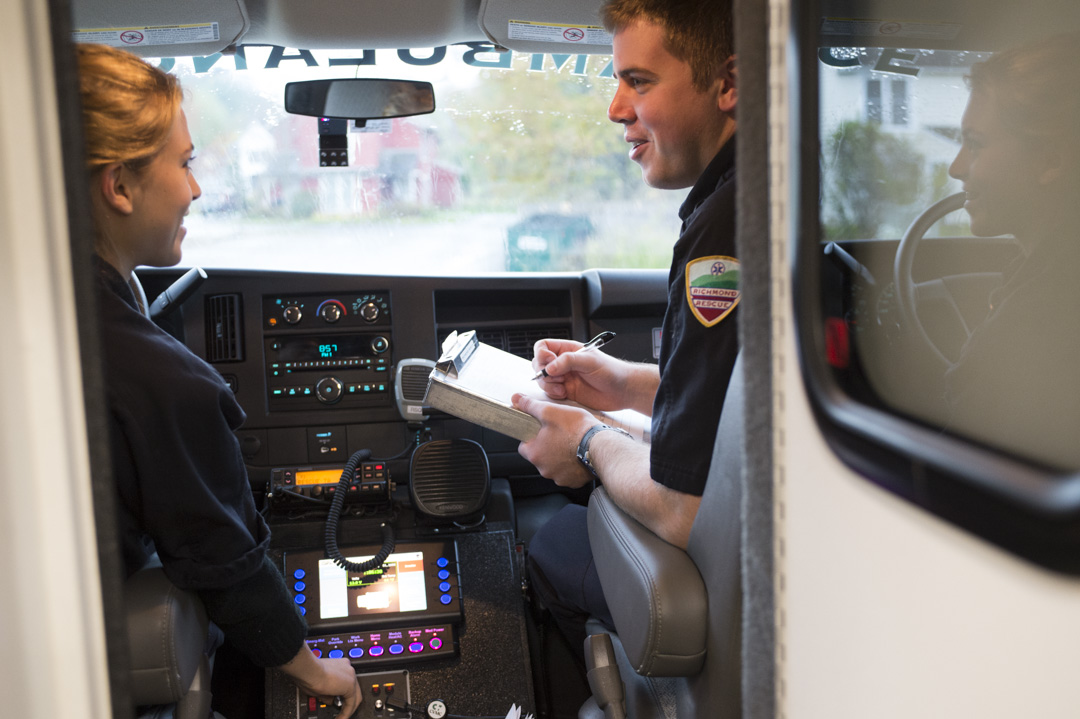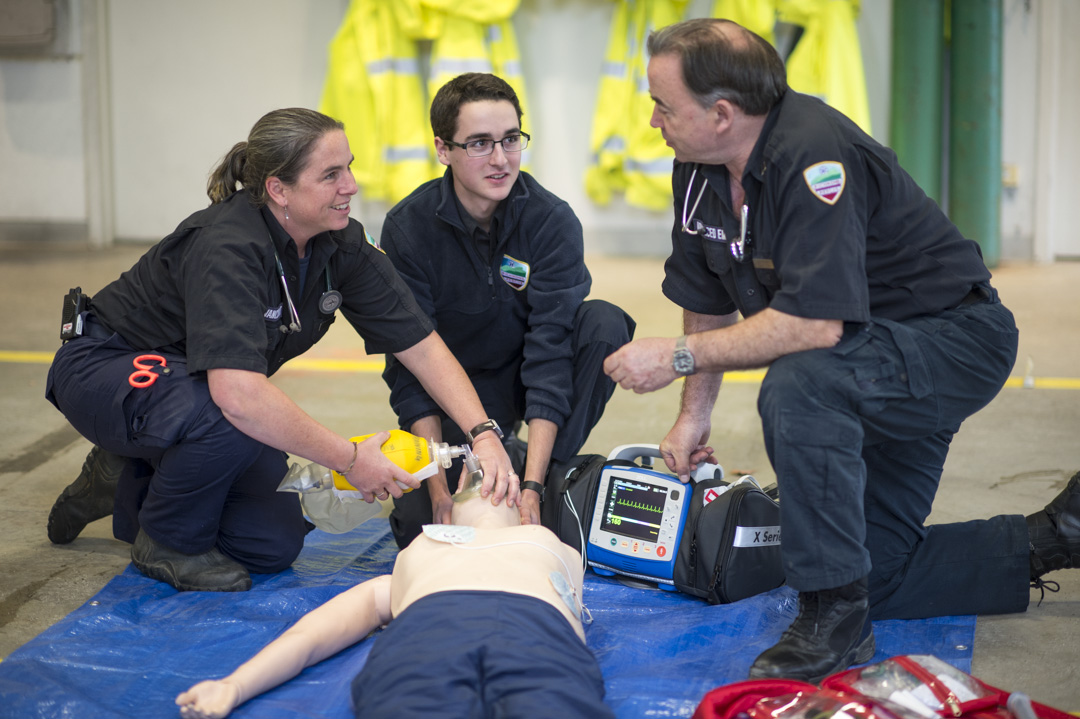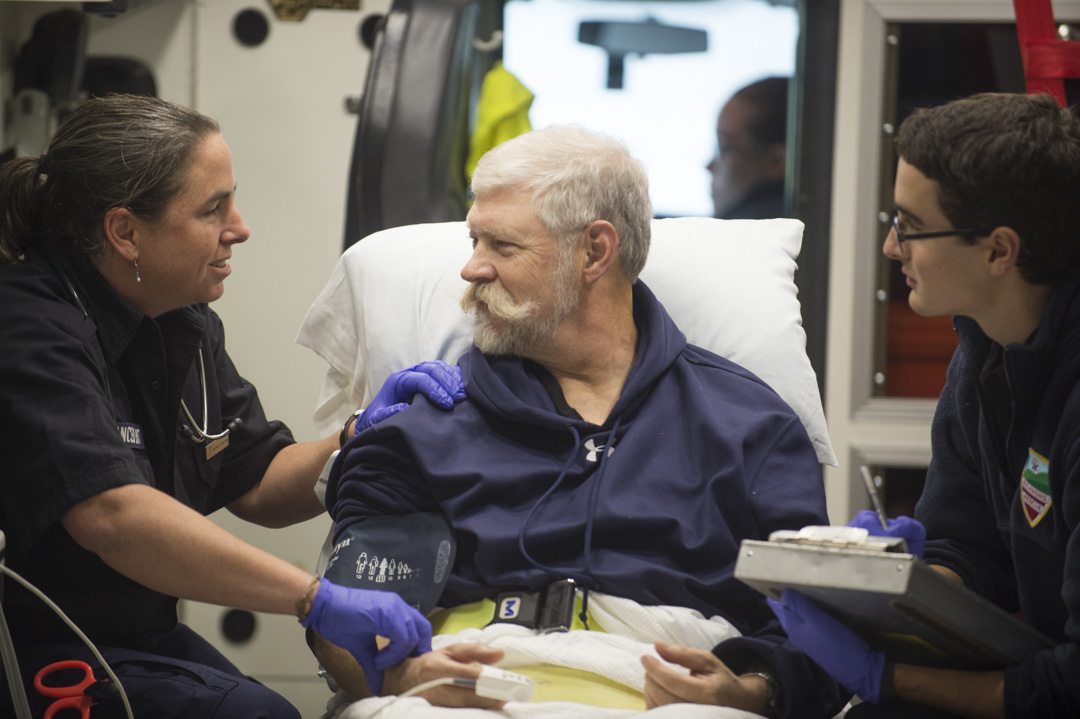
Emergency Medical Services offers those who have an interest in medicine or emergency response to become trained and certified to provide care to their community.
Once certified, EMTs respond to medical 9-1-1 calls with their EMS agency either by ambulance or as a first responder. Regular participation with your squad ensures your skills stay sharp and your community members receive care when they need it.
Responding to a Call
Depending on your squad’s procedures, you may work dedicated shifts at a station—or you may respond to calls from your home. When a call comes in, you’ll never quite know what to expect, but you’ll be trained with a crew to respond to emergencies such as:
- Medical patients such as those experiencing difficulty breathing, myocardial infarction (heart attack) or other cardiac issues, diabetic emergencies, or allergic reactions.
- Traumatic injuries resulting from vehicle accidents, falls, head trauma, burns, poisoning or overdose, bone fractures or muscle tears.
Your specific role on each call will depend on your level of certification and licensing.
Certification levels
EMS personnel are certified and licensed at 4 different levels:
- Emergency Medical Responder (EMR) Primary focus is to initiate immediate lifesaving care to critical patients entering the EMS system. They possess basic knowledge and skills to provide interventions while awaiting additional EMS response and to assist higher level personnel on scene and during transport. 12 hours of continuing education is required every 2 years after initial certification.
- Emergency Medical Technician (EMT)Provide basic emergency medical care and transportation for critical and emergent patients entering the EMS system. As a part of a comprehensive EMS response, the EMT possesses the knowledge and skill to provide patient care under medical oversight using basic equipment typically found on an ambulance. 72 hours of continuing education is required every 2 years after initial certification.
- Advanced Emergency Medical Technician (AEMT)Provide limited advanced emergency medical care and transportation for those who access the EMS system. In addition to the skills of an EMT, AEMTs are able to perform more advanced assessment and interventions, including: advanced airway management and IV access for medication administration. 72 hours of continuing education is required every 2 years after initial certification.
- ParamedicParamedics provide Vermont’s highest level of pre-hospital emergency medical care. In addition to the skills of EMTs and AEMTs, paramedics possess a complex set of skills and knowledge and are able to provide advanced patient assessments and interventions, including: medication administration, pain management, and cardiac monitoring. 72 hours of continuing education or reexamination is required every 2 years after initial certification.
You can begin as an EMR or an EMT, both of which provide basic lifesaving care to critical patients. Once you have obtained an EMT license, you may pursue additional training to become an AEMT or a Paramedic. Paramedics provide Vermont’s highest level of pre-hospital emergency medical care.
At all levels, you will be required to maintain certification by completing a minimum number of training hours every two years. For more details on certification and licensing requirements, visit the National Registry of Emergency Medical Technicians (NREMT) and the Vermont Office of EMS and Injury Prevention.





